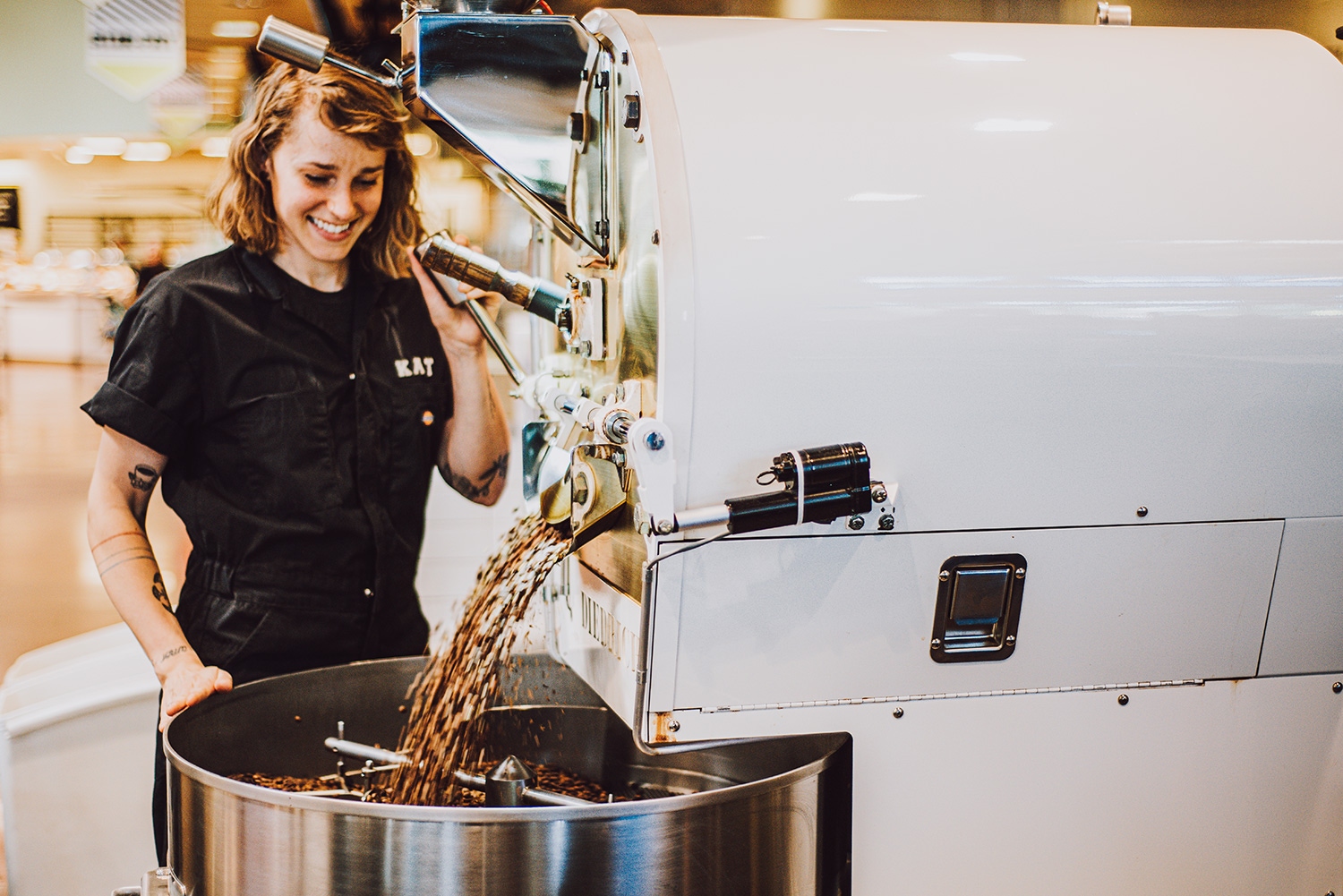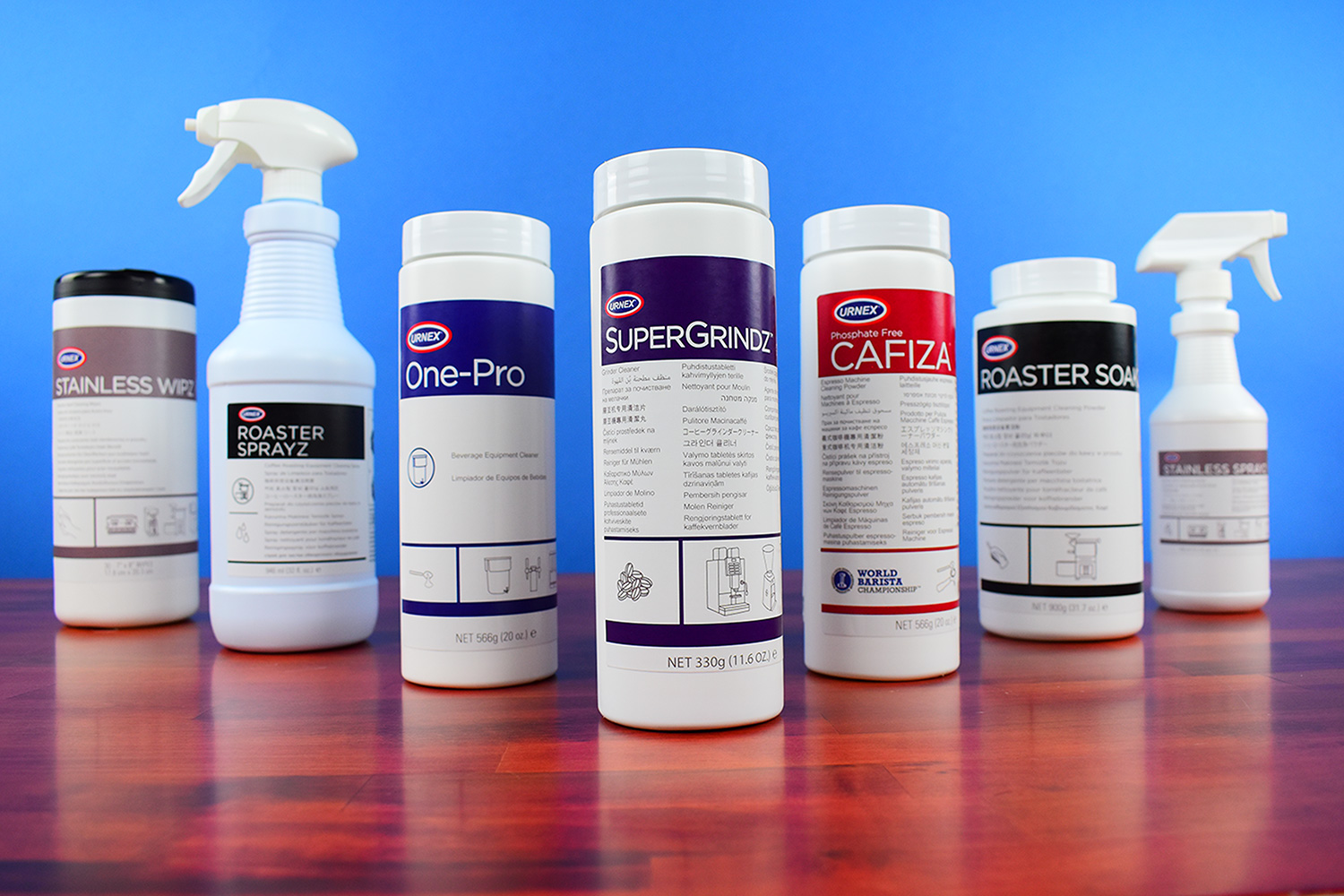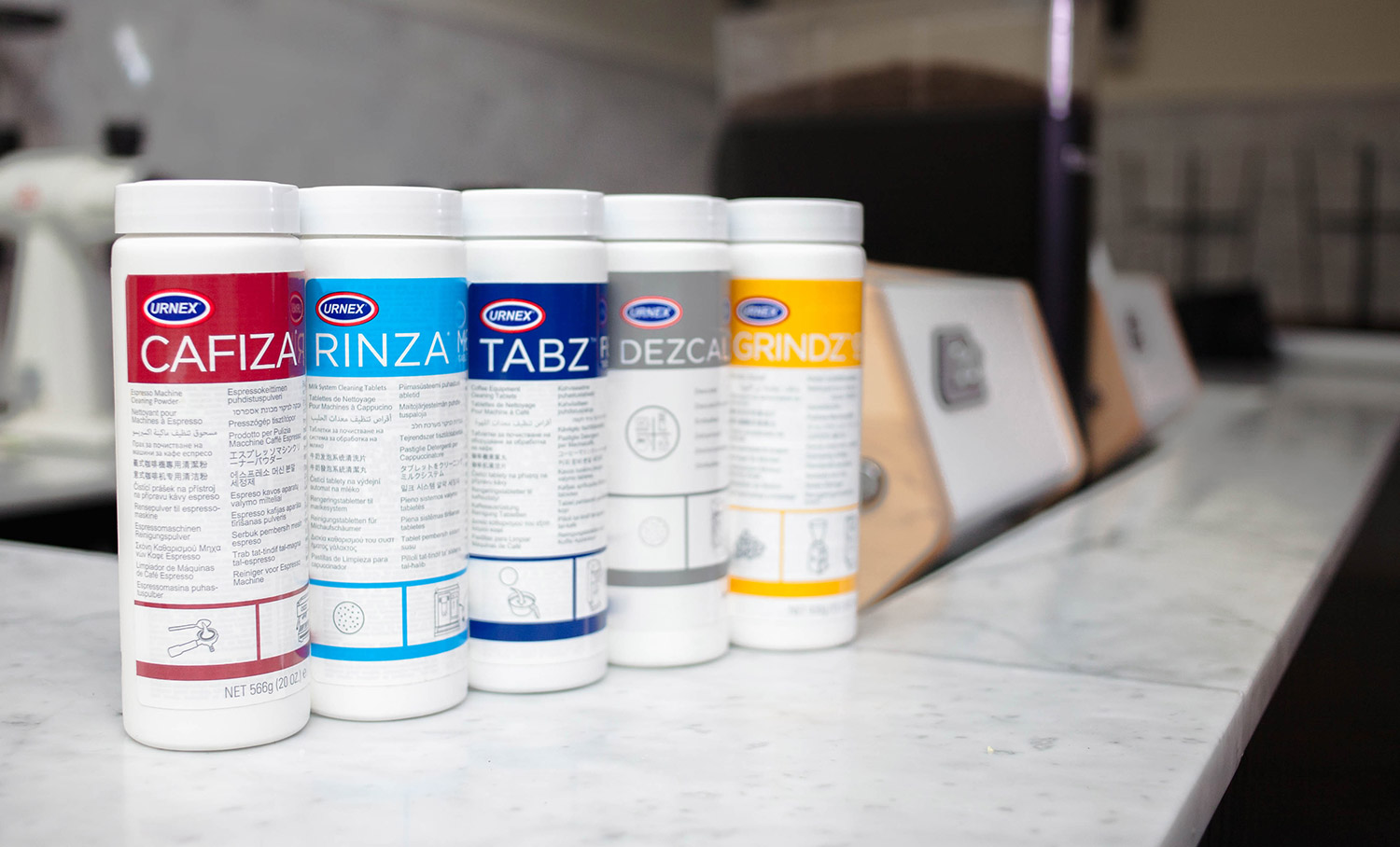
All this gear isn’t just for display: each piece of equipment on a coffee bar has a distinct purpose in enhancing the coffee and the customer experience, while also making the craft of the barista a dynamic one.
But considering this wide assortment of tools at a barista’s disposal, we’re seeing that coffee professionals are maintaining their equipment with a one-size-fits-all mentality. Namely, we’re seeing folks use Cafiza to clean every piece of equipment in the café.
Don’t get us wrong: as the makers of Cafiza, we agree it’s pretty darn great. It can clean portafilters, coffee mugs, and even vintage cars. But Cafiza wasn’t designed to clean everything in a café.
In this post, we’ll walk you through the best practices for taking care of each piece of equipment you might have in your coffee shop, and how our full line of cleaning products can help you do it.
Traditional Espresso Machines
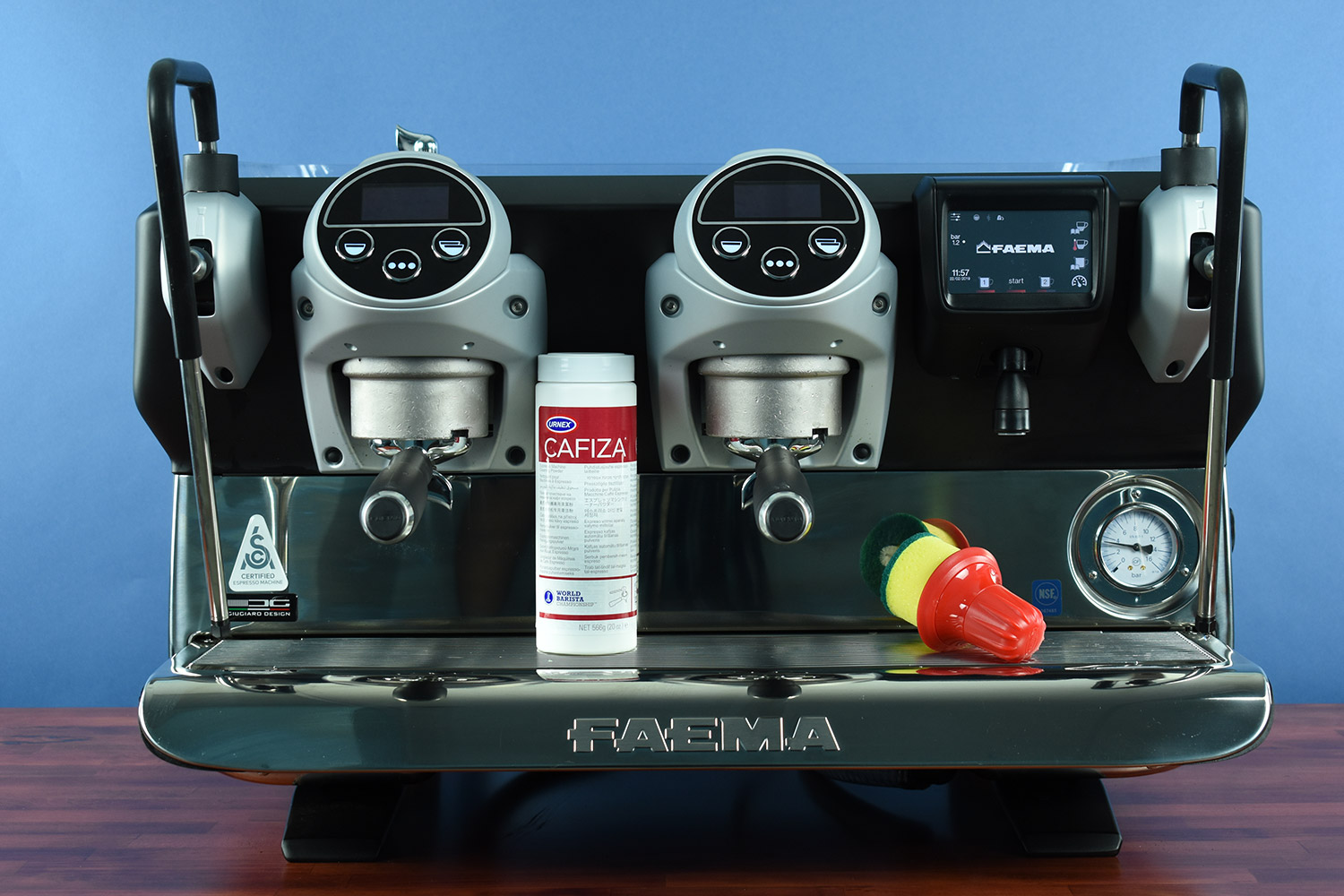
A traditional espresso machine is also a sophisticated, multi-faceted device, so we’ll break down its maintenance protocol by its individual parts:
Group Head
The group head is the meeting point of the espresso machine, the portafilter and the coffee grounds. It’s the mechanism where water is forced through the grounds at an ideal temperature and pressure to produce a well-balanced espresso. But the group head won’t distribute the water evenly through the grounds if lingering coffee residue isn’t cleaned from the filter screen of the group.
To address this built-up coffee oil, we recommend a cleaning process known as backflushing. Backflushing a machine will clear away the coffee gunk that accumulates in the group head and filter screen and allow a barista to pull an evenly extracted shot of espresso. And our Cafiza Espresso Machine Cleaning Powder is the perfect product to effectively remove this coffee residue.
To backflush an espresso machine, add a dose of Cafiza powder to a portafilter with a blind basket in it. You’ll then insert the portafilter into the group, and alternately start the brew cycle and pause the brew cycle for 10 seconds, repeating this step 5 times.
Click here for step-by-step instructions for how to backflush.
Portafilter
The portafilter is undoubtedly the barista’s best friend. From collecting the ground coffee, to stabilizing the tamp, to initiating the brewing process, and dispensing the espresso, the portafilter is always there for you.
But because the portafilter is in constant contact with the ground coffee itself, giving it a deep clean is essential for a tasty, well-extracted espresso. And just like with man’s best friend, we recommend giving the portafilter an occasional bath.
Start by creating a cleaning solution of hot water and a dose of Cafiza Espresso Machine Cleaning Powder. Then submerge the metal parts of the portafilter into the solution and allow it to soak for up to 30 minutes.
Click here for step-by-step instructions for how to clean a portafilter.
Steam Wand
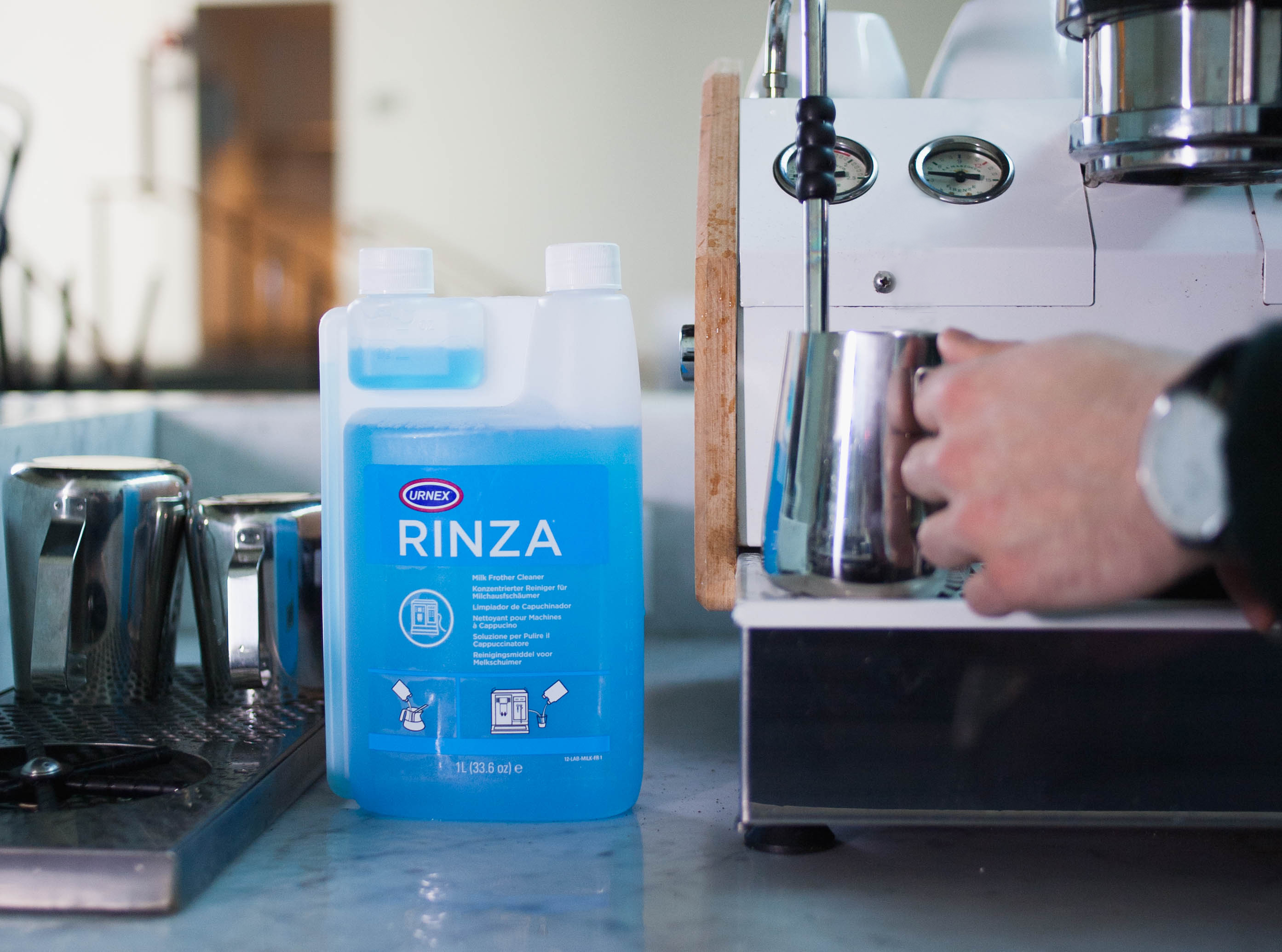
But producing the perfect microfoam for a tasty milk drink or beautiful latte art design takes both skill and clean equipment. Milk can become stale inside the steam wand, blocking the steam’s path, even if the wand is purged. To counter this, we recommend cleaning your wand with Rinza Alkaline, which is formulated to eliminate milk fat from in and on the steam wand, and Rinza Acid, which removes the mineral scale buildup from the water present in milk.
To clean a steam wand, start by creating a cleaning solution of Rinza and cold water. Remove the steam wand from the espresso machine and soak it in the solution for up to 30 minutes.
Click here for step-by-step instructions for how to clean a steam wand.
Batch Brewers
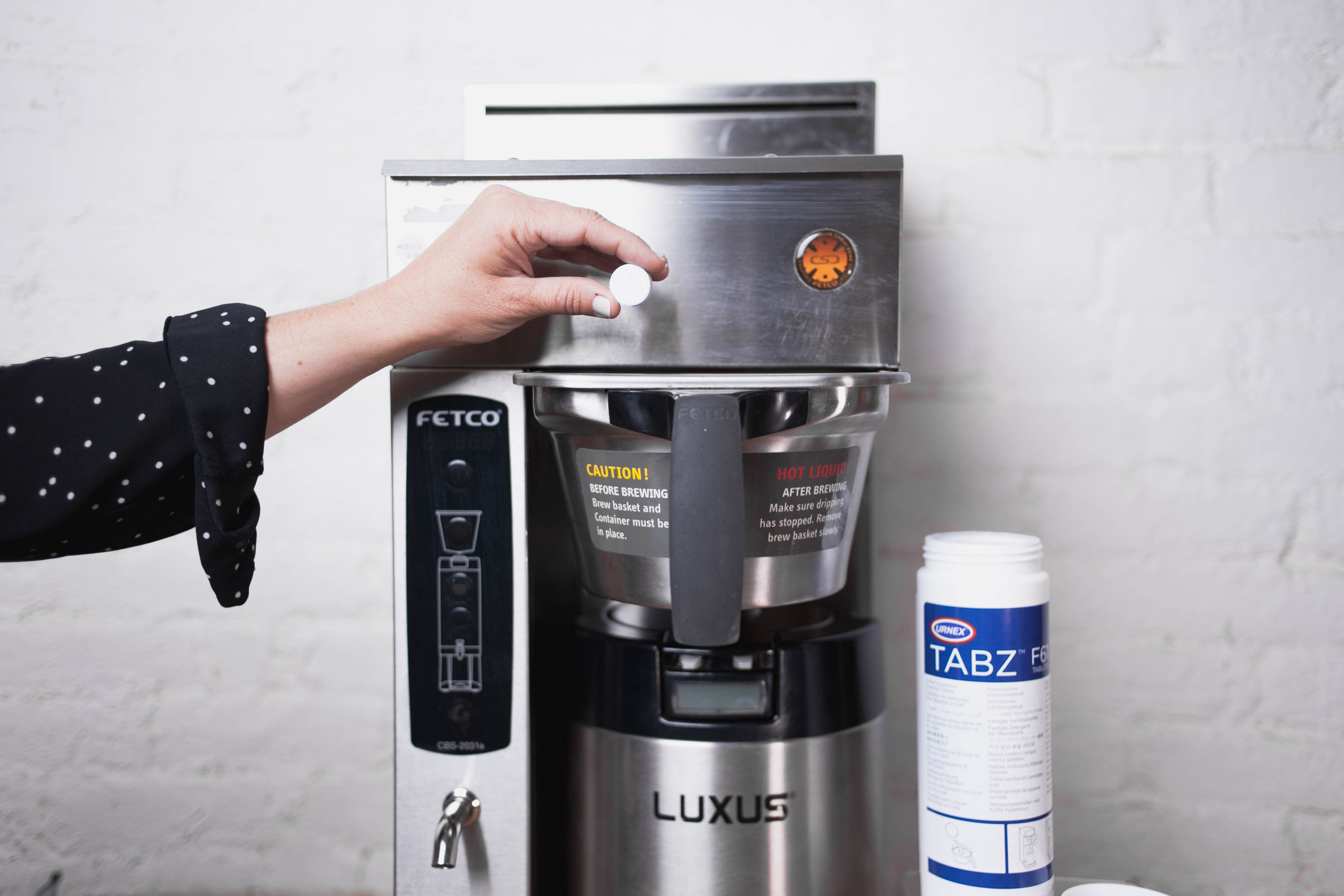
But with regular use, a batch brewer requires a bit of upkeep to maintain consistently tasty cups. Because coffee can sit in a batch brewer for up to a couple of hours, rancid residue in both the airpot and brew basket can taint current and future batches.
But our Tabz Coffee Equipment Cleaning Tablets address both issues by cleaning the brew basket and server simultaneously. Simply place the appropriate number of Tabz tablets in the center of the brew basket, run the brew cycle into the server, and discard the solution.
Click here for step-by-step instructions for how to clean a batch brewer.
Grinders
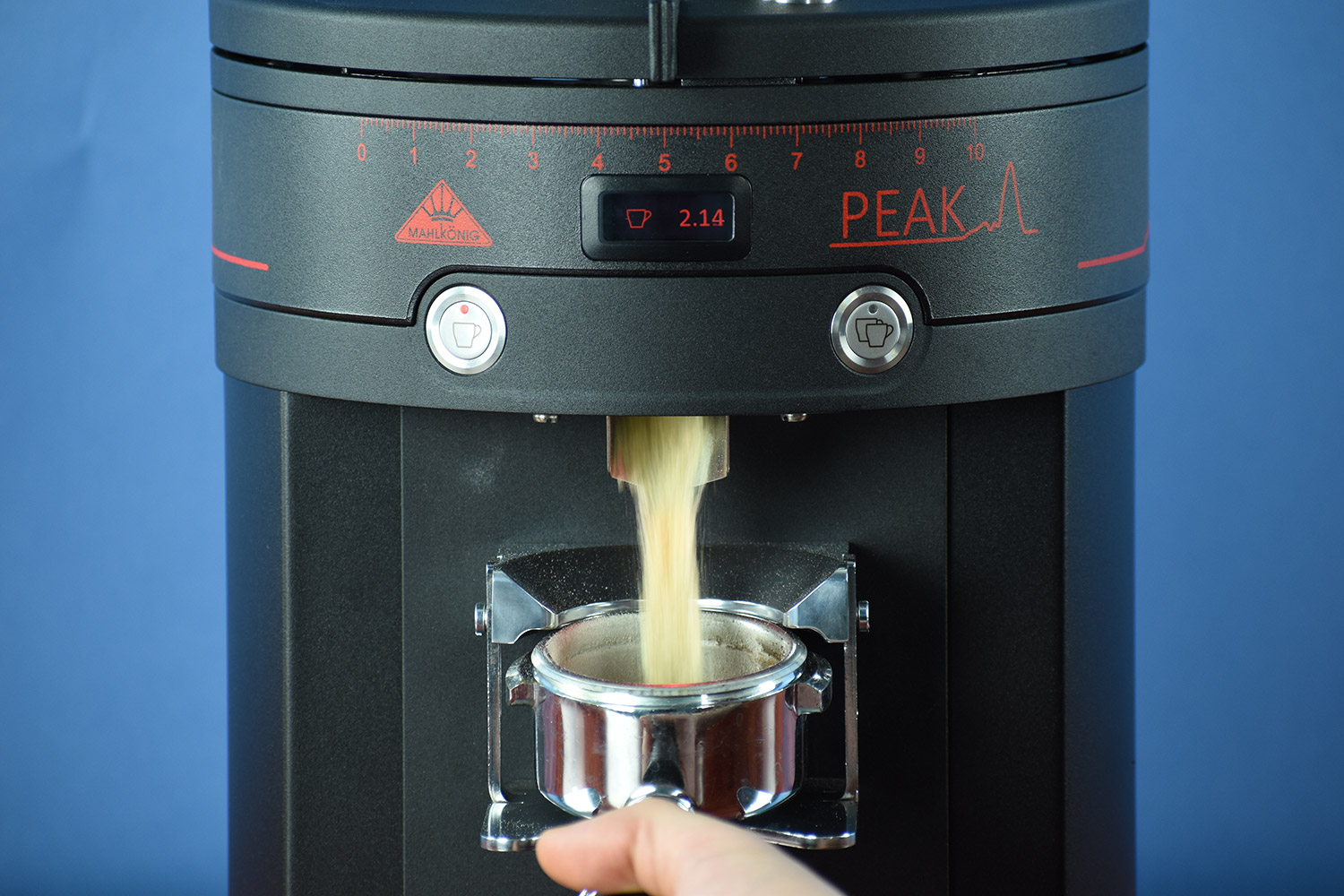
Whether you’re adding new beans in the hopper, adjusting your grinder setting or purging the machine of old coffee, achieving a good grind is done by maintaining a clean grinder. Old coffee particles can become lodged inside a grinder, and grimy coffee oils can adhere to the burr set, diminishing grind precision and shortening the life of the grinder.
Our patented Grindz Grinder Cleaner effectively cleans the grinder burrs and casings, with no grinder disassembly required. Just pour the proper dose of Grindz into the hopper, set your grind setting to medium, and grind the product through the machine like you would with coffee.
Click here for step-by-step instructions for how to clean a grinder.
Cold Brew Equipment
Now a staple in third wave cafés and global coffee chains, cold brew is officially a coffee fan favorite. Why wouldn’t it be? It’s a balanced and easy-drinking cup, refreshing on a hot day, and it’s always a joy served from a nitro tap.
But brewing and serving cold brew can pose a safety risk. Unlike hot brewed coffee, cold brew is typically left to sit out within the temperature range that bacteria grows. It’s critical that each piece of equipment that touches the coffee be cleaned and sanitized prior to each use.
This year, we’ve introduced our new One-Pro cold coffee equipment cleaning powder to ensure the safe preparation of cold beverages. To use it, create a concentrated solution of the One-Pro powder and water in the brewing vessel. Then allow the solution to sit for 15 minutes, drain and rinse.
Click here for step-by-step instructions for how to clean cold brew equipment.
Countertops and Exterior Surfaces
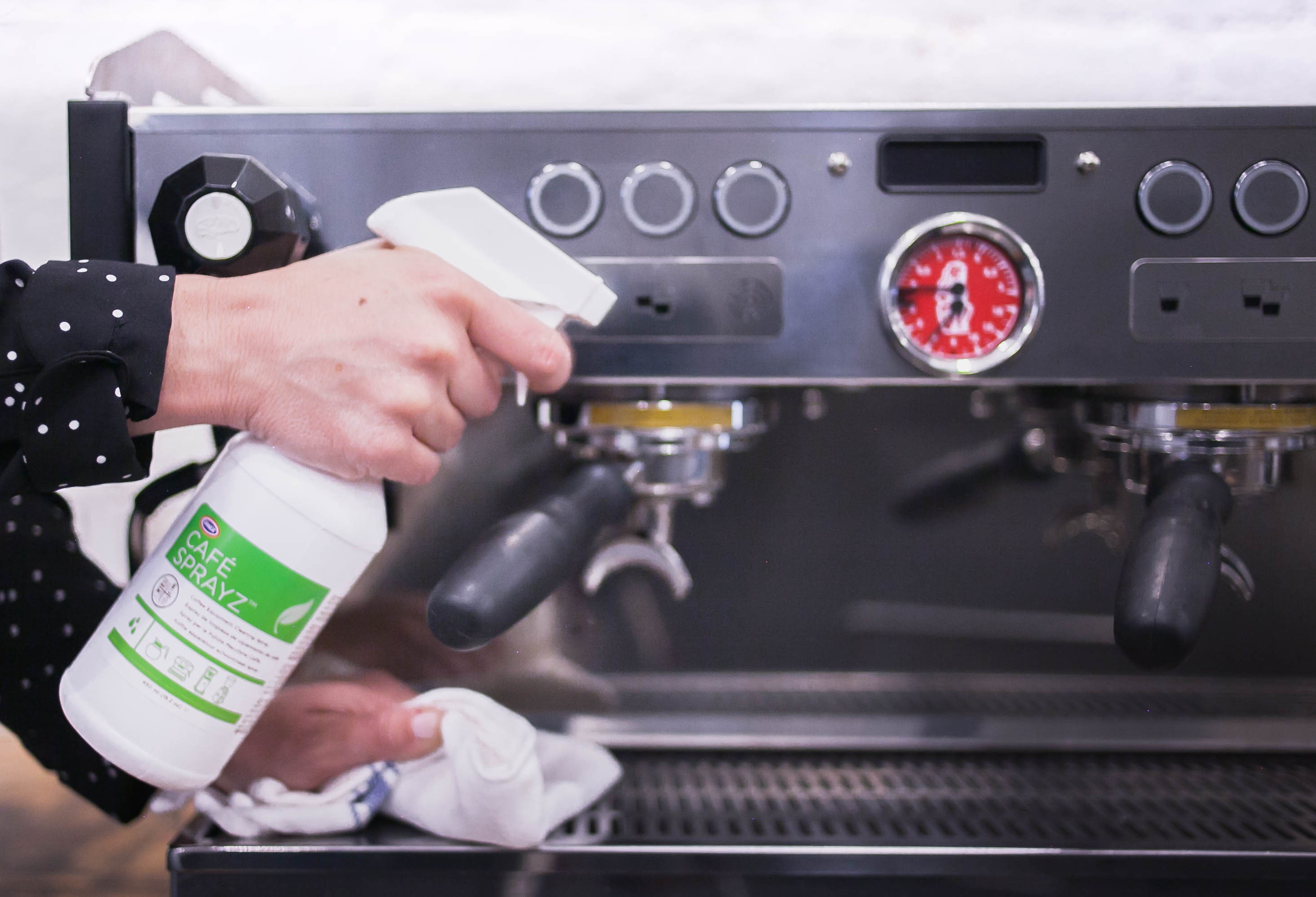
We offer a range of products to combat these everyday messes. Café Wipz and Café Sprayz are coffee shop essentials for keeping your bar and countertop equipment sparkling all shift long. They’re also quite handy at a coffee event or pop-up shop.
We have also introduced our new Stainless Wipz, which removes fingerprints, smudges residue and grease from espresso machines, batch brewers or refrigerators. It even contains a protective coating to repel dust and dirt.
Roasters
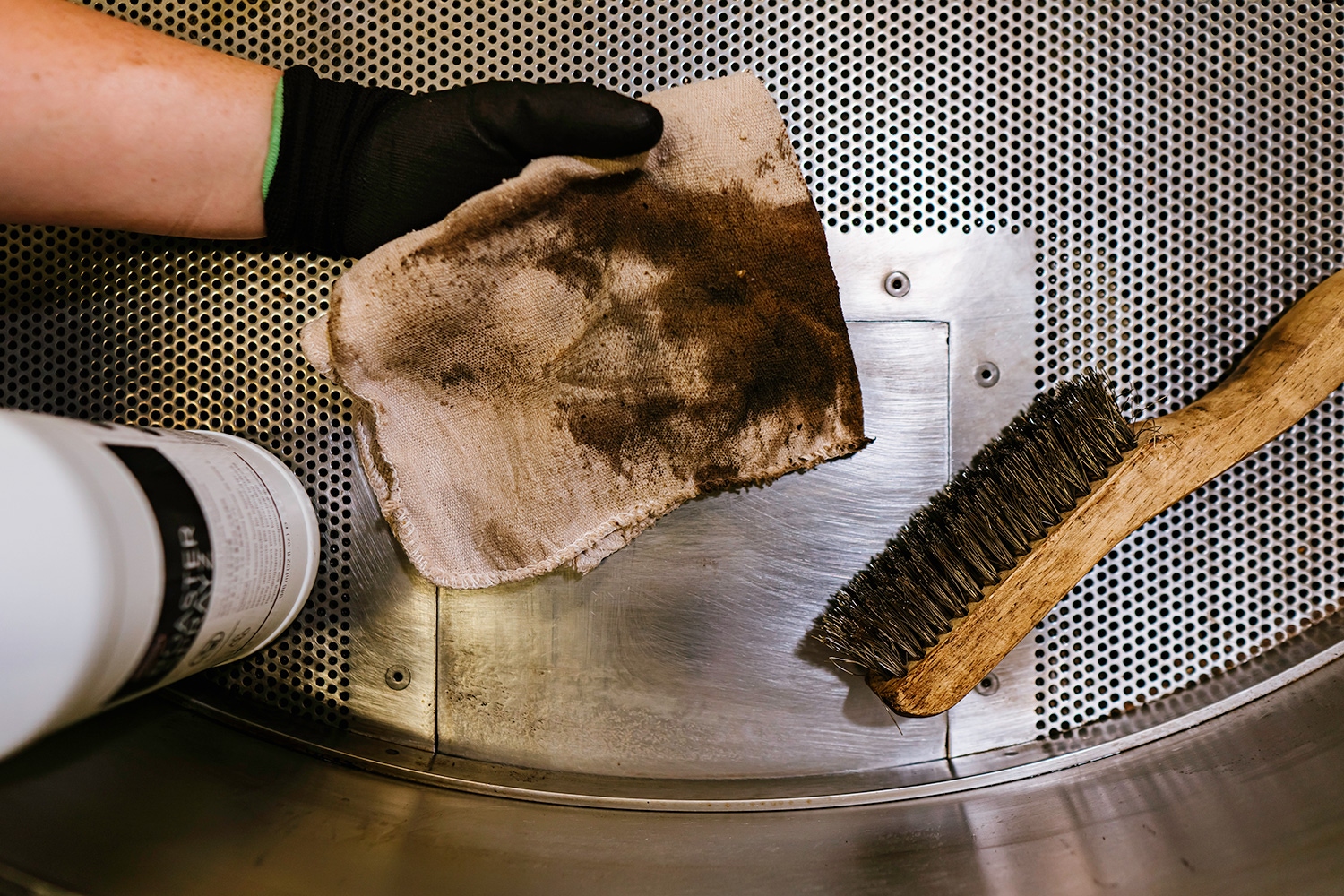
Whether inside or out of a coffee shop, roasting has its maintenance challenges. The high heat from the machine bakes the coffee residue onto various parts of the roaster, which can restrict airflow, disturb overall batch quality and consistency, and pose a safety hazard in a roasting facility.
This year, we launched our first dedicated products for the roasting community: Roaster Sprayz is a high foaming liquid that adheres to soiled roaster parts and dislodges and removes coffee residue with ease. And Roaster Soakz is a powdered cleaner designed for parts that are best cleaned with a full and immersive soak.
Click here for step-by-step instructions for how to use Roaster Sprayz.
Descaling
Descaling is an inherently different process from cleaning. Instead of removing coffee oils and residue from equipment, the descaling process eliminates the mineral deposits from water that clog and impair brewing equipment.
Descaling can be easily done on home coffee brewers by simply filling the water reservoir with a solution of our Dezcal Scale Remover Liquid and water and letting it sit for up to 30 minutes. But on commercial coffee and espresso equipment or closed system brewers, descaling should be done by a professional technician.
Click here to learn more about the difference between cleaning and descaling.

